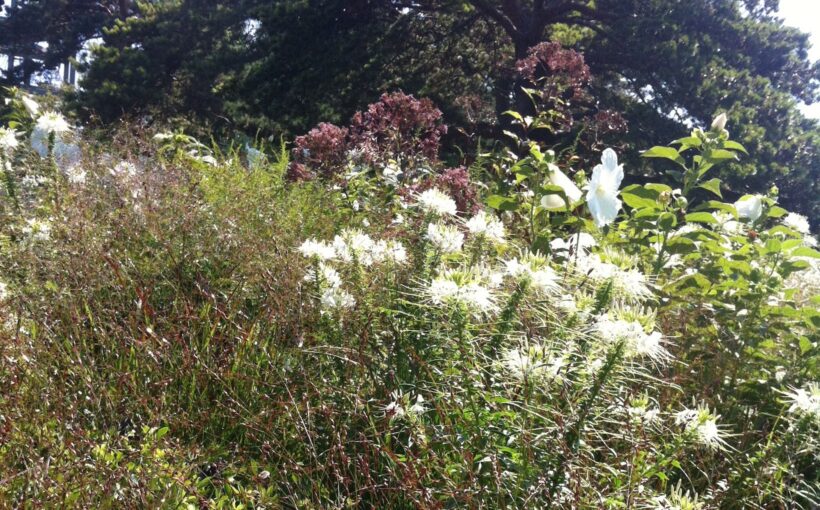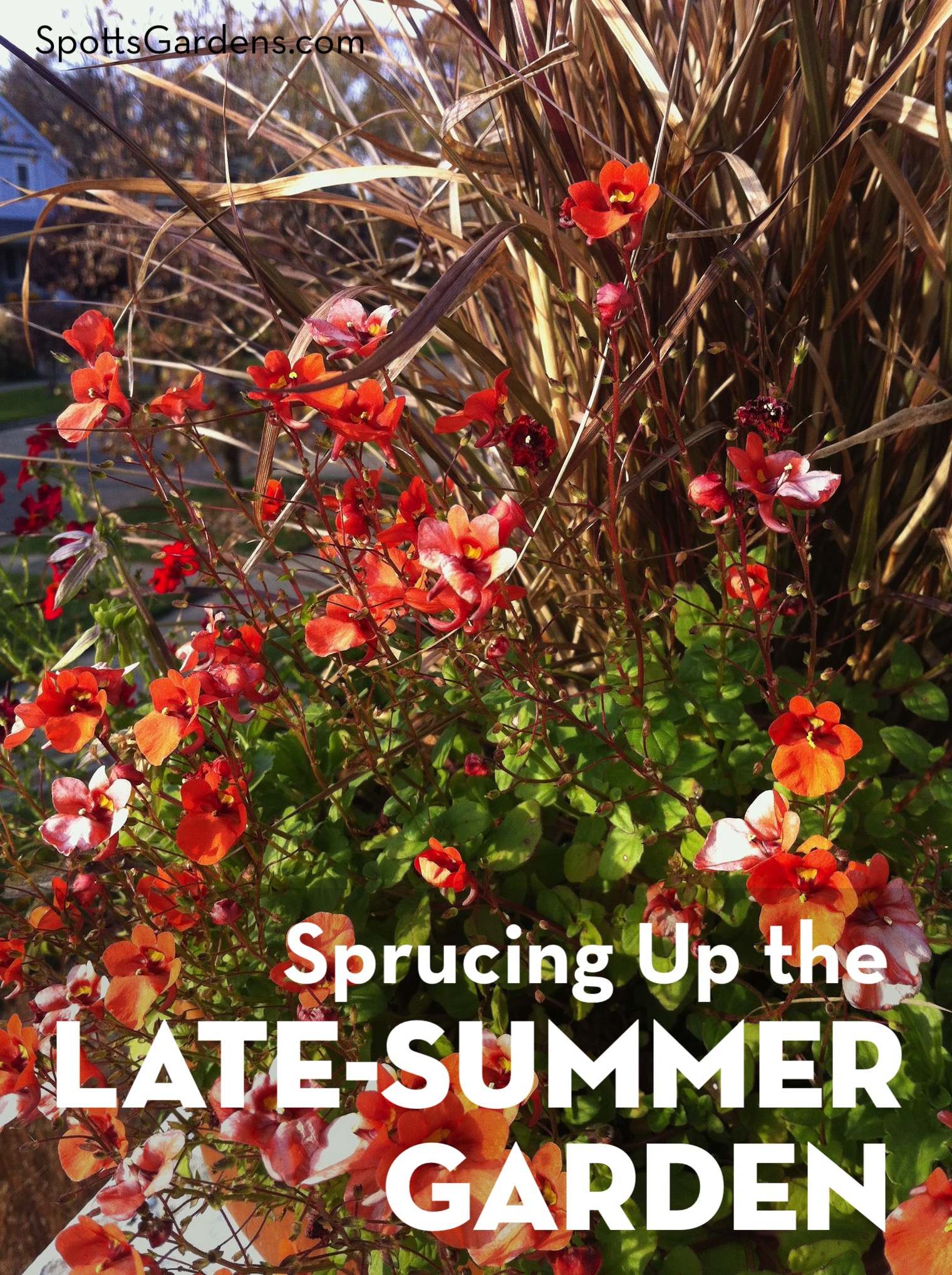By late summer, the Midwestern garden is usually looking a little tired. Most summer flowers are done, and the fall ones are still a month away. Relentless heat and drought have given the borders a beating. Fortunately, we have some simple ways to carry your garden past the late-summer doldrums!
Refresh Your Container Gardens
Unless you’ve been diligent about deadheading and pinching back, the flowering plants in your container gardens probably have become leggy or nearly stopped blooming. Time for a revamp!
Keep anything that’s still in good shape. Trim off dead leaves and cut back vining plants if they’re too long. Then pop in a burst of color with some fresh blooming annuals or ornamental peppers. Water thoroughly to help them settle in.
For inspiration, check out the combinations at the National Garden Bureau. Tender plants like petunias, impatiens, and sunflowers will continue to bloom until our first frost in October.
Take Some Off the Top…
A late-summer chop can do wonders in the garden. If your plants are flopping or falling over, cut them back:
- If the foliage on your peonies looks ratty, cut it to the ground and throw it away.
- Cut daylily foliage and stems to a few inches tall to encourage new growth.
- If plants like salvia, daisies, and penstemon are done blooming, look for fresh green leaves at the base of the plant. If you see these basal leaves, you can cut the stems down completely, just leaving the new green basal leaf growth.
- Tidy up flopping catmint and coreopsis by cutting stems back by 1/3 to 1/2.
…But Not Off the Grasses
Don’t cut back your ornamental grasses, even if they’re flopping. Instead, try this trick!
- Go around the outside of the plant, cutting the outermost stems of the grass to about half their height.
- Leave the center of the grass, including the seedheads, in place.
- The cut ring will act as a support for the tall grasses, helping them stay upright.
Lay Off the Mowing
August is usually hot and dry, so your lawn slows its growth way down. Reduce your mowing to every other week, or to just when the lawn looks like it could use it. As always, set your mower no lower than 3″. Mowing high encourages grass to grow instead of weeds.
Overseed Bare Spots in the Lawn
Mid-August to mid-September is the best time to fill in those bare spots in the lawn. Overseed with an appropriate grass seed for your sun conditions. Our pick for sunny lawns is rhizomatous tall fescue (RTF) which both spreads by rhizomes (meaning it can fill in easily and repair holes in the turf) and has deep roots (making it more drought resistant.
Alternatively, oversaw your lawn with miniclover. This dwarf white clover returns nitrogen to the soil, keeping the turfgrass green. And the flowers are terrific for bees and other pollinators. It takes mowing just like turfgrass.
With these tricks, you can refresh your garden for several more months of enjoyment. If you want help sprucing up the garden, contact us today!

